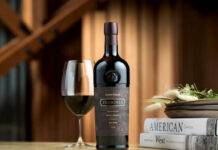Catering equipment prices may rise but kitchen savings can be found, say firms

THE economic outlook remains uncertain, with the UK on course to make a break from its biggest trading partner next year.
And it seems the UK’s withdrawal from the European Union could bring mixed fortunes for the catering equipment sector, with some manufacturers and suppliers predicting an impact on costs while others say developments in technology give cause for some optimism about the future of the industry and the benefits it can bring operators in the on-trade.
Jonathan White, marketing manager at Mitchell & Cooper, which specialises in light professional catering equipment, said he does not “foresee any dramatic price increases” on his company’s goods due to Brexit.
He added: “We expect that exporting products across the world will continue to neutralise any increased cost from purchasing and importing materials from Europe.”
Steve Elliot, sales director for Valentine Equipment and Cuisinequip reinforced that view.
He said: “This is nothing new as different economic and political factors have caused currencies to fluctuate before and people still pay for quality equipment from the UK and overseas.
“We see Brexit reaching some kind of balance and, as a business, we buy a lot from EU member states and this will continue to run smoothly with the help of agents handling customs.”
On the other hand, Glenn Roberts, chair of the Catering Equipment Suppliers Association (CESA) was less optimistic, saying the “most obvious” prediction he could make was that price rises on equipment were “likely”.
“Equipment manufactured overseas has gone up due to the weakness of Sterling,” said Roberts.
“The cost of components and raw material, such as stainless steel, has gone up for many UK manufacturers, so their list prices have had to rise.
“In many cases the manufacturers, importers and distributors have tried to minimise the impact to their customers by swallowing some of the increase.”
You only get what you pay for and this is most often discovered by experience.
However, any rising costs in commercial kitchen kit could be offset by technological advances in equipment, which is reducing the amount of energy used by equipment and therefore the running costs, said those in the know.
And this is evident in commercial ice makers, said Simon Frost, director of sales and chain accounts at Hoshizaki.
“Developments in technology and manufacturing capability have led to the introduction of super energy-efficient ice making technology,” said Frost, adding that examples of such equipment can help reduce both “consumption of water and electricity”.
So when it comes to replacing catering equipment, Mark Cooke, commercial sales manager – commercial, foodservice at refrigeration specialists Liebherr GB, said operators should look for “maximum energy efficiency” with equipment, adding that this should be a “key consideration” for businesses.
The move towards kitchens which use less energy has been demonstrable in the market for microwaves too.
Panasonic is this year releasing an all metal door professional microwave that uses energy saving inverter technology, for example.
Another factor to bear in mind when looking to buy new equipment is functionality, according to Steve Morris, sales director at Jestic Foodservice Equipment.
“With kitchen space at a premium, operators should be choosing their equipment for its cooking capability and its versatility in order to make the most from available space,” said Morris.
As many products in busy on-trade kitchen environments are subject to rigorous use and are expected to have longevity on their side, Tim Strutt, sales manager for Electronic Temperature Instruments, advised licensees to do their homework before making large outlays on equipment.
He said: “You only get what you pay for and this is most often discovered by experience.
“It is always good to seek opinion from others. The internet provides for a wealth of information and networking allows discussion on brands and their performance.”



















